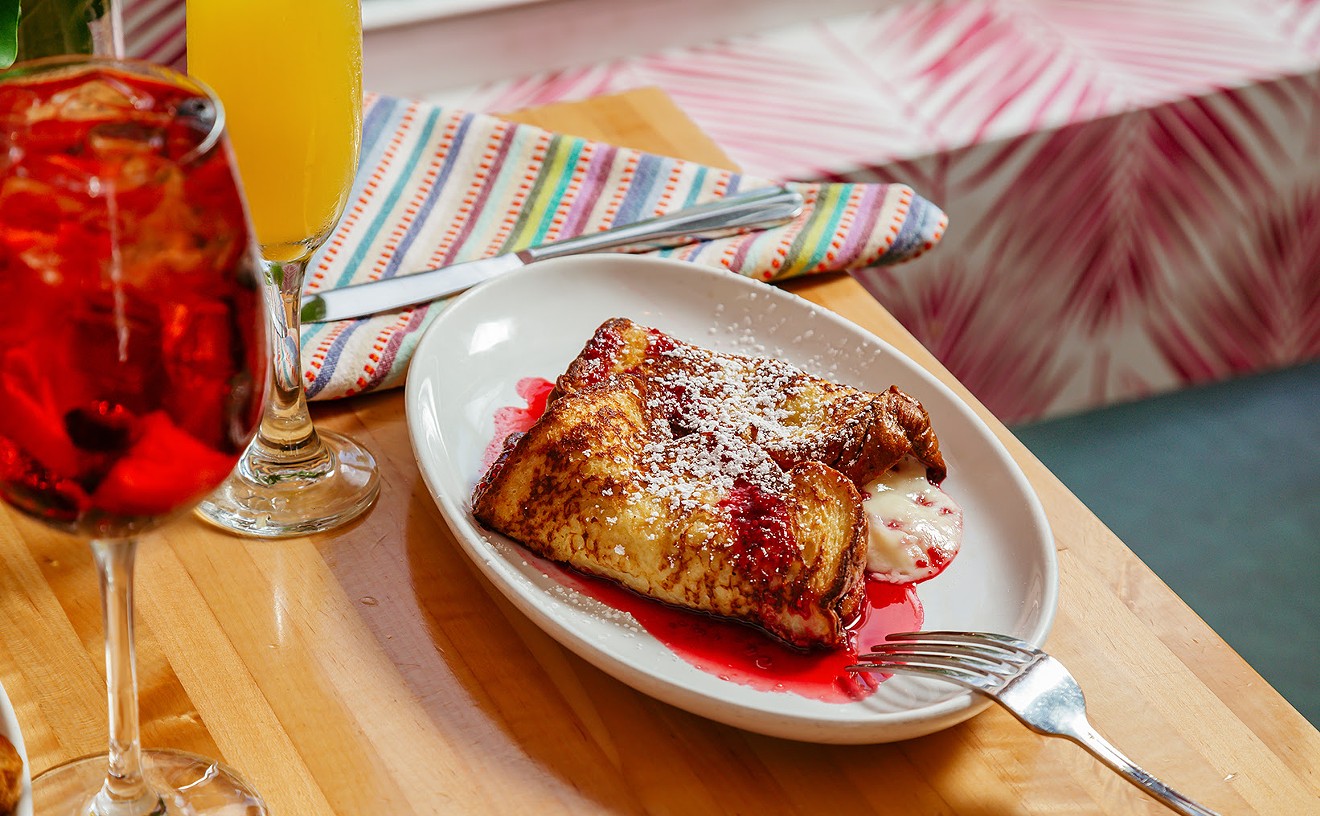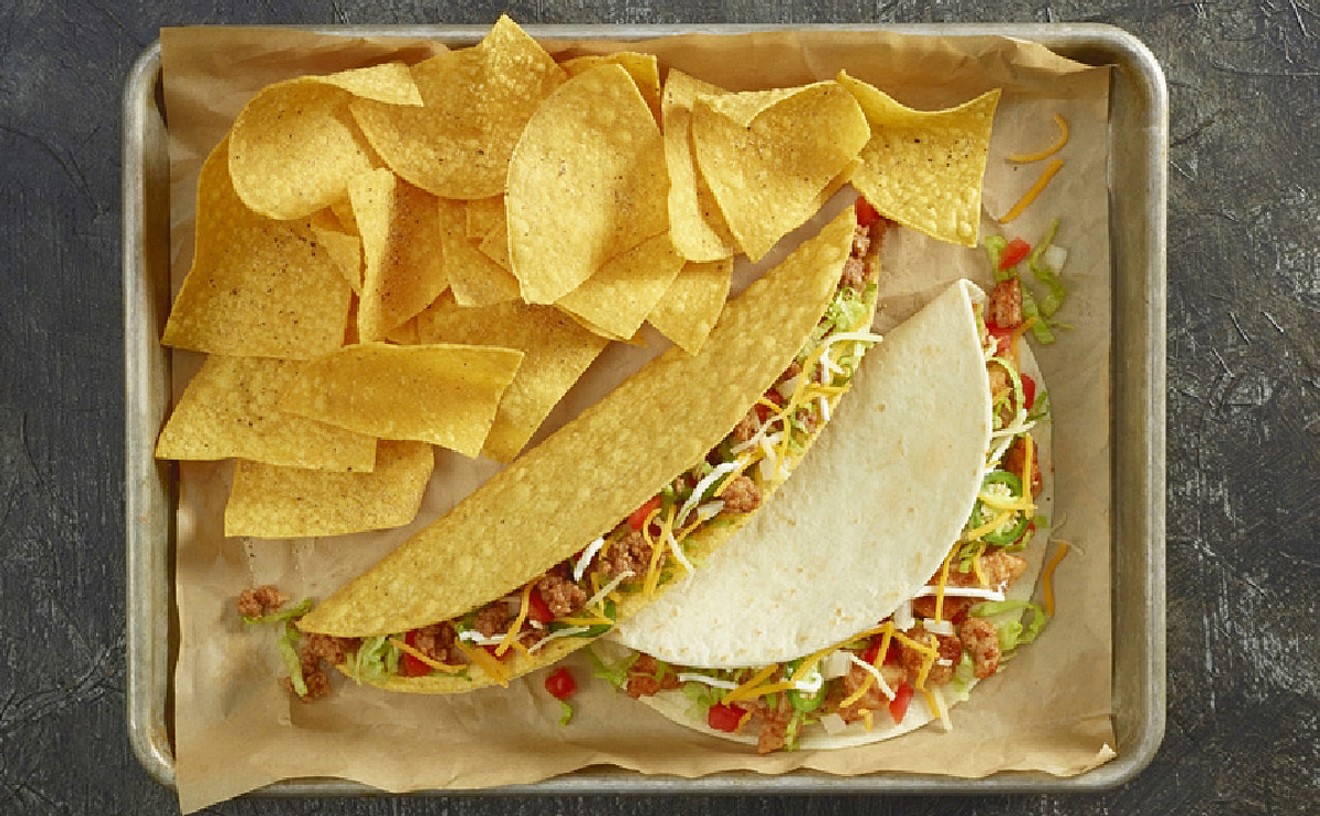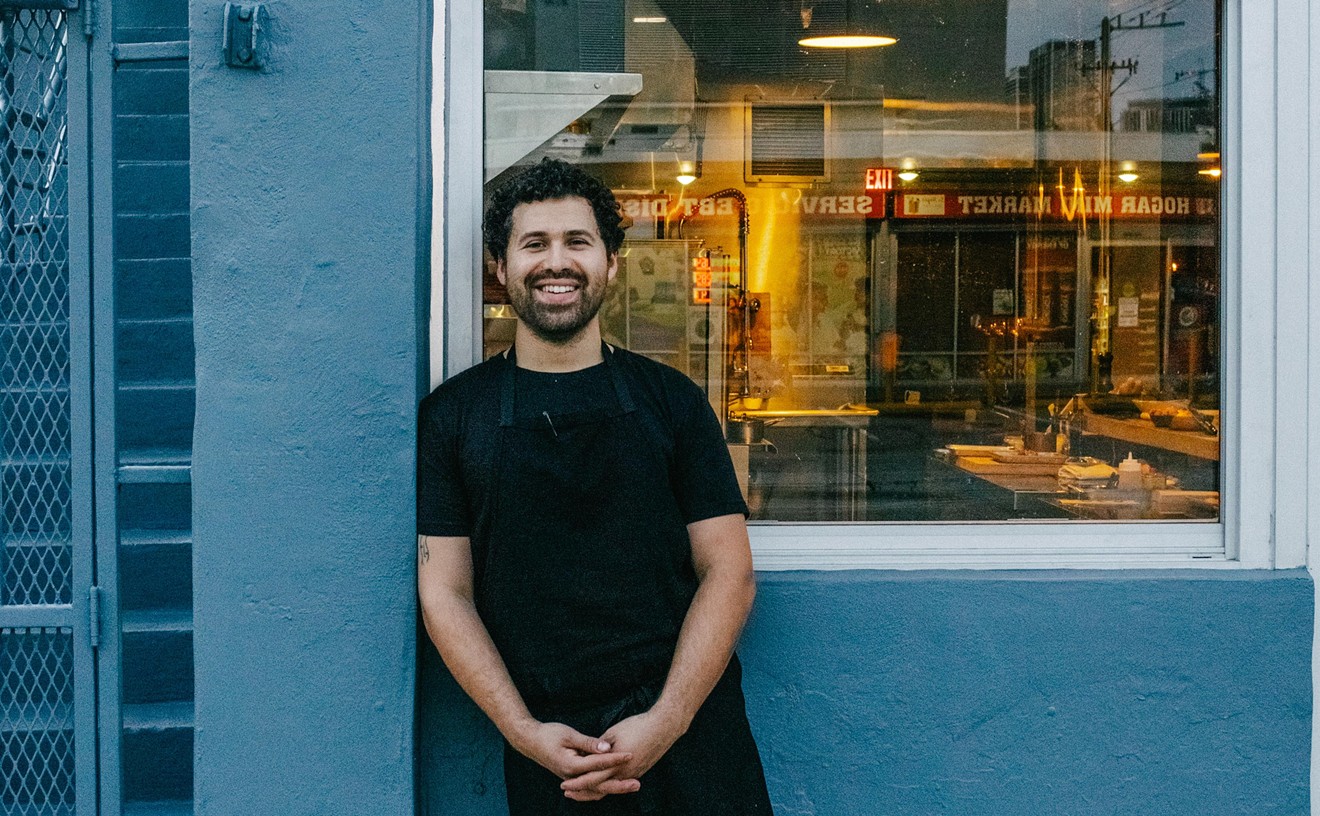Brothers Gino and Fernando Masci come to Miami by way of their hometown of Abruzzi, Italy — with a 26-year stopover as owners of Greenwich Village's renowned and star-studded Il Mulino. They had planned on retiring after they sold that venture five years ago (and before its new owners opened a Mulino in Sunny Isles), but when their cousin Luigi Tullio touted our town as being hungry for authentic Italian cuisine, the siblings realized they were just as hungry to get back into the game. The stage for the trio's return is Il Gabbiano, located in the east tower of downtown's One Miami building, just behind Prime Blue Grille. Unlike that steak house, which is visible from Biscayne Boulevard, Il Gabbiano is out of sight. As evidenced from the crowds at lunch- and dinnertime, it is not out of mind.
Il Gabbiano is outta sight figuratively as well. From the first plunk of a chunk of Parmigiano-Reggiano onto a side plate, to a complimentary limoncello with the check, the Mascis march out a succession of solidly, sometimes stunningly satisfying dishes that should once and for all stop those whiny, Rudy-tooting New York refugees from complaining about a lack of quality Italian food in this city.
The dining room is loveliest at lunchtime, when light streams in through two windowed walls that open to a glistening view of Biscayne Bay (when weather cooperates, the outdoor terrace can't be beat). The interior vista is iffier, an amalgam of "something old, something new." The space is cleanly lined, contemporary in design, and appointed with a full-service bar, modern artwork that looks as if it belongs in a sushi joint, and icicle-shape lights jutting from the ceiling like stalactites. Posited within this swank framework are thick, cylindrical columns; bamboo trees in planters; and a European-style display of hams, cheeses, wines, olive oils, and other Italian imports.
Then again, you really won't have much time to take in the surroundings. Almost immediately after patrons are seated, waiters drop off the aforementioned cheese along with a plate each of bruschetta and fried zucchini soaked in garlicky, spicy olive oil. A basket of sourdough bread is placed alongside — plenty to munch on while perusing a list of some 200 bottles of Italian wines.
Another Old World touch is a makeshift workspace in the dining room in which the Masci men stand and sauté pasta courses on propane-fueled burners. It seems incongruous with the formal setting, but diners should be thrilled to see restaurant owners cooking; they absolutely will be upon tasting the results. An Italian pasta chef, who has worked with the brothers for decades, produces chewy noodles that rank among Miami's finest. But don't take my word for it: Sample porcini ravioli bathed in champagne sauce, whose well-balanced flavors are fleshed out by cleanly defined flecks of black truffle, black pepper, and Parmesan cheese. On hand is a wide sampling of traditional pasta cuts (including orechiette, gnocchi, bucatini, tortellini, and trenette) and treatments (such as pesto, carbonara, alfredo, and a rousing rendition of Bolognese). Even a simple pappardelle with tomatoes, basil, and olive oil inspired awe for the way its few ingredients harmonized while retaining their distinct notes.
Pastas, in other words, are all good. And as you know, good things come to those who wait. You will need to be extremely patient here. We had planned on starting with antipasto caldo, which we were told contained clams and shrimp. Forty minutes later, our waiter came to inform us the kitchen was out of shrimp. It was still relatively early in the evening for this to occur, especially considering that five menu items contain the crustacean. The real downer, though, was the length of time it took for us to get the news. We decided at that point to skip the starter and begin with our pasta course.
A side order of broccoli de rape never made it to the table either (yet was included in our check). This particular waiter was in a somewhat confused state, sometimes to comical effect. "I'd like veal saltimbocca," I said when it was time to order our food. "Did you order it?" was his reply. I didn't quite know how to respond, so I just answered, "I guess I'm doing so now." Later in the evening, he came by to inquire how our desserts were — before we had gotten them. Still, he was amiable and ultimately efficient, and the rest of the staff was alert.
Il Gabbiano gobbles up dollars: Starters run $15 to $22, pastas $20 to $25, risotti $28 to $34, meats $24 to $43, and seafoods $28 to $36. Specials cost considerably more. Branzino and Dover sole were recited as the fish du jour, and upon asking the price of the former, I was told $48; presumably the sole was at least $10 more. The food is worth it (relatively speaking), with one caveat: When charging so much, restaurateurs can afford to ensure that their meats and produce are organic. It is long past time they put their money where our mouths are, which is something that will be noted in future reviews of establishments that serve entrées of $30 or more.
My dining companion claimed to be an osso buco enthusiast with a track record of disappointment. He raved about Gabbiano's rendition, carefully braised to a tender but not mushy state and rising from a shimmering pond of demi-glace. A petite fork was provided for scooping out rich, fatty marrow from the bone. Fantastic stuff, even if risotto on the side underperformed because of overcooking.
A by-the-book saltimbocca was prepared flawlessly. Soft, thin fillets of veal were capped with crisp slices of prosciutto, laced with sage, and perked with garlic-sautéed spinach. A bottle of Barolo wine is perhaps best for fearlessly confronting — and then embracing — these potent flavors. A worthy Barolo, though, doesn't come cheap ($80 for an Alba to $250 for a Gaja).
A Sauternes-poached pear, whose plate was sprightfully speckled with berries and pooled with ethereal sabayon sauce spiked with amaretto liqueur, was a vision to behold. Tiramisu, boasting a keen coffee kick and chopped chocolate on top, also proved superior to most. So please, if any of your friends are Italian-food know-it-alls from the Northeast, persuade them to dine at Il Gabbiano. It will not only quiet them, but also do so in a New York minute.











